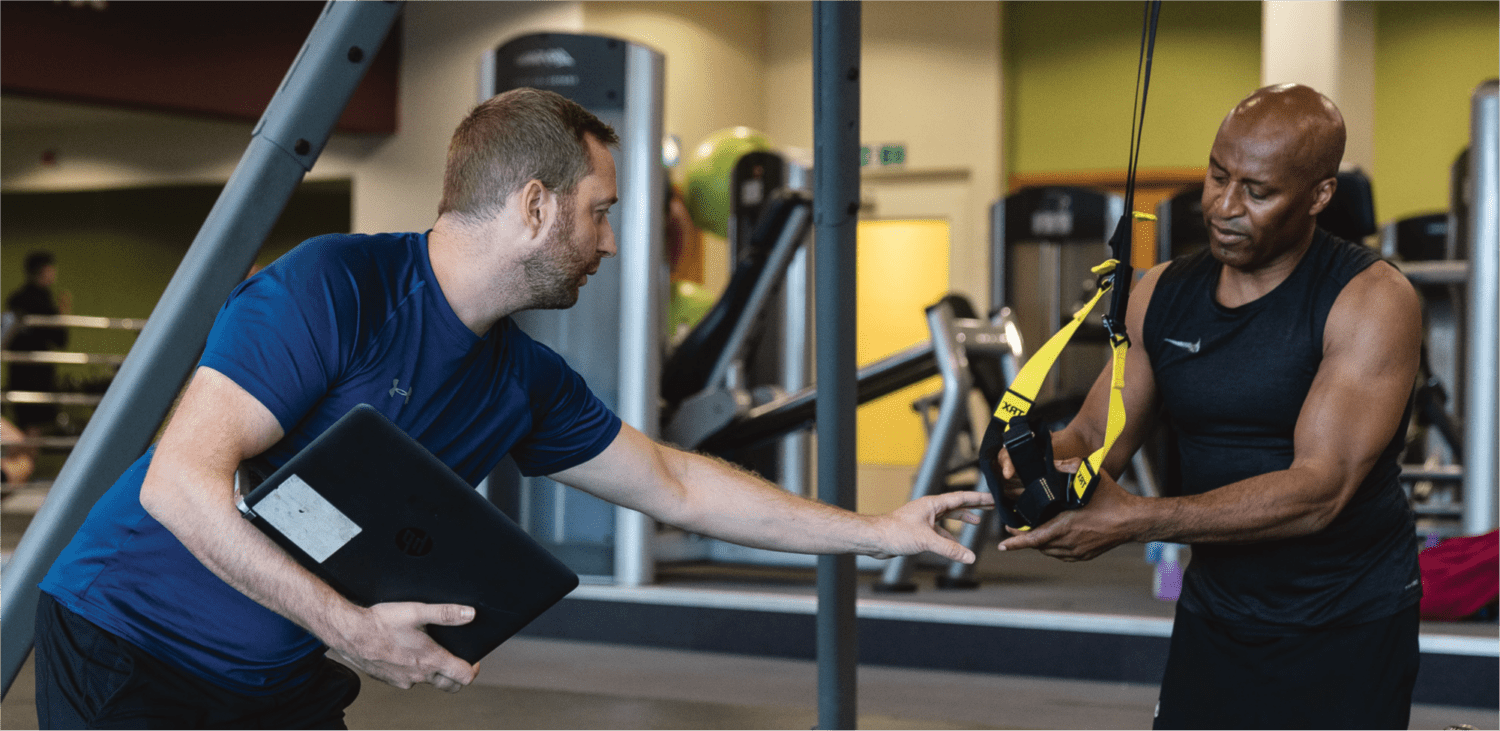

A government-funded personal training course is a PT course that is supported by funding from the government for those who are looking to become personal trainers with Level 3 qualifications at no initial cost.
Government funding can work in different ways, with some funding methods the whole cost of the course will be covered, and sometimes it might be part-funded. Whilst a fully qualified Personal Trainer can earn up to £60,000 per year when working with specialist clients, or with add-ons like sports massage or strength and conditioning, the initial cost of a course may make the qualification seem daunting.
There are several eligibility criteria to be checked when applying for and receiving funding including age and personal circumstances. We have put together some key points regarding the different funding options available to provide you with a better understanding of what will work best for you.
An advanced learner loan is a form of government funding support that provides students with a flexible way to pay their personal training course fees. This works similarly to studying for a university degree, whereby the government loan the initial money and this is then paid back once you finish your course and earn over £27,295 a year. This form of government funding for personal training courses is popular due to it being one of the easier application processes.
Some training providers will provide you with advanced learner loan options, but before you decide this is the route you want to take, you should consider whether the course matches your requirements. In the fitness industry, there are very few providers who have this option available, those that do such as YMCA and FitAsylum, have stages involved in their application process when applying.
Apprenticeships can offer government-funded personal training courses, combining both on-the-job training and studying for a qualification into one process. Apprenticeships can vary in study days versus working days, but the standard is usually one day of study at a college and the rest of the week in your place of work.
Depending on the route you want to take, there are several apprenticeships available that require different entry levels, the majority of them require you to have a GCSE or equivalent in Maths and English. You can then choose to study a Level 2 qualification to become a fitness instructor or a Level 3 qualification to become a personal trainer.
Personal Training Apprenticeships can be a good way to study whilst also gaining practical experience, they provide you with the knowledge inside the application making it more of a streamlined learning process.
A self-funded personal training course means that you are responsible for paying the full cost of your course, without funding support from the government.
This isn’t to say that with a self-funded personal training course, there aren’t options and payment methods to support you in repaying the cost of the course.
For example, Future Fit personal training courses offer 0% finance options, pay as you learn (at Future Fit, we call this Flex Pay) and deposit and balance. Therefore, you must research different non-funded personal training courses and learn more about what is available and achievable for you.
A non-funded personal training course means that you are responsible for funding the full cost of your course, without support or assistance for the funding from the government.
This isn’t to say that with a non-funded personal training course, there aren’t options and payment methods to support you in repaying the cost of the course.
For example, Future Fit personal training courses offer 0% finance options, pay as you learn and deposit and balance. Therefore, you must research different non-funded personal training courses and enquire to understand more about what is available and achievable for you.
Once you have determined what it is you want from a personal training course, you can move on to discussing payment options with training providers to work out how you can fund your learning. Many non-funded personal training courses have in-house career advisors or customer support who can discuss payment options in greater detail to determine what is the best option for you.
Payment options such as 0% finance or pay as you learn can be good options to look for when researching training providers. This helps you avoid any surprise costs at a later date and also means you are paying as you go, just like a phone contract!

When looking to study personal training you will likely come across several non-funded personal training courses which vary in price between £1,500 up to £4,000 mark. Price can have a big influence on which training provider you go with, however, it is important you carry out a complete course comparison checklist before committing to ensuring you are getting everything you want from a course.
Some training providers may seem like the go-to as they sit in a lower price range, but often these types of courses only qualify you on an online learning basis with no practical experience. Practical experience in personal training courses has a huge determination on how successful you can be as a personal trainer. You wouldn’t learn to drive a car based solely on some online learning you completed.
Therefore take into consideration that a course with practical experience may seem more costly at the time, but it’s worth investing more into yourself to outshine those PTs without practical experience.
Government-funded personal training courses have both their advantages and disadvantages which mainly focus on the financial benefits over the educational ones.
This is a way the government can support learning and ensure that people aren’t held back financially to become qualified. Below we have discussed some of the key advantages of a government-funded PT course.
Repayments on government-funding personal trainer courses are based on earning value, similar to any other student loan. This means you’ll only begin to pay the loan back once you earn over a certain amount and the repayments can be relatively small.
The agreement of a student loan scheme is based on your income once you start working, when you earn over a certain amount you will start paying this back. At this point, the repayments are minimal and can be between £10-£15 a month.
Unlike if you choose to finance the cost of a paid course, government-funded personal training courses are not subject to credit checks, potentially making it more accessible depending on your financial situation and eligibility status.
Self-funded personal trainer course providers will usually include a deposit or pre-payment when you get started, which means you need to ensure you have some money aside for this as you apply for qualification.
A government-funded personal trainer course will not ask for a deposit or any prepayments, so you can start your studies without having to worry about paying an initial fee.
The ‘aftercare’ of a government-funded personal training course may be limited. This could impact your progress in studying, and the majority of government-funded personal training courses will only provide the minimum qualification required to enter the industry and, therefore, could leave you struggling to begin your career.
Government-funded courses may offer a less flexible time frame for completing your course. This could mean you need to make larger lifestyle changes to complete your course on time. Training providers like Future Fit have a flexible learning approach so that people can start studying alongside their existing commitments.

Non-funded personal training courses may not seem like the best option at the first research stage of wanting to become a personal trainer.
However, there are a few key advantages that are unique to non-funded personal training courses which influence people to follow this route instead of a government-funded personal training course.
The majority of the non-funded personal training courses will give anywhere between 6 months – 3 years to complete your training. With this in mind, these training providers will look at providing a flexible learning approach so that people can start studying alongside a full-time job or alternative commitments.
The opportunity to study around your commitments makes the decision easier rather than having to prioritize your learning to sacrifice something else in your life.
Future Fit personal training courses have a blended learning approach meaning you can complete some of your studies in your own time online and the rest is gaining practical experience through face-to-face workshops.
This style of learning makes the course more approachable knowing that you are in control of the rate you complete your learning, whilst being able to access elements of learning from the comfort of your own home.
Qualifying as a Personal Trainer with independent training providers can create a highly rewarding and well-paid career. You have the opportunity to qualify at Level 2 at the start of your learning which means you can start earning from your qualification after the first 2-3 months.
This can support you in covering the monthly cost of your course whilst also gaining industry experience whilst studying. Once you are fully qualified as a Personal Trainer you have the potential to earn up to £60,000 per year when working with specialist clients.
Studying with an independent training provider can be deemed more valuable from a practical experience and knowledge aspect, which means you can build a successful career in the health and fitness industry.
Most training providers will have an on-hand student support service to provide advice and guidance throughout your journey when studying with them. Having this support can be reassuring for students when looking at starting a personal training course, knowing that they have the support there if they need it.
Government-funded courses are limited to specific qualifications and course content which can sometimes limit the opportunity to learn. Non-funded personal training courses provide the minimum qualifications to become a personal trainer alongside specialist opportunities such as a Level 5 Personal Trainer Course with RSPH Nutrition, Sports massage or Strength and conditioning.
If you choose to study a non-funded personal training course, you will find that the opportunity to learn more is much greater which in turn increases your earning potential and makes you more attractive within the fitness industry.